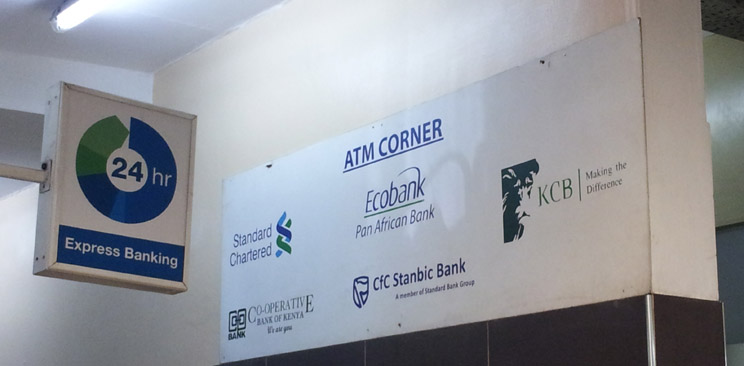A former student used to work for a microfinance institution in Kenya. He quitted: he wasn’t comfortable with the high rates and fee charges of traditional microfinance loans (37 % average). Meant to promote financial inclusion, these loans may end up making borrowers poorer than they were. At the same time, the super-high interest rates have to do with the high risk the lender runs because it’s difficult to evaluate creditworthiness. The good news is that technology can help overcome this problem, and contribute promoting financial inclusion.

In Kenya, both start-ups and established banks are using technology to evaluate creditworthiness in unconventional ways. A couple of examples that I read in the latest issue of The Africa Report:
- InVenture is an U.S.-based start-up that describes itself as “using world class technology to revolutionize financial services in emerging markets.” How? Through their Tala application, one can get instant loans up to Ksh 50,000 (about US$ 500 or € 440). Applying for the loan takes 5 minutes. The approval process takes into account contact information on mobile phones: if more than 40 % contacts listed include both first and last name, the owner of the mobile is estimated to be 16 times more likely to repay loans promptly.
- Sidian is a mid-sized Kenyan commercial bank. They have partnered with Uber to offer car loans to Uber drivers at below average market rates (10.5 % vs. 18 %). Uber drivers that have made 500 rides and have a user rating of 4.6 out of 5 qualify for the loan. Sidian has allocated 10 billion (close to US$ 99 million or € 88 million) to this end.
Quite interesting! I want to make a couple of points:
- This reminds me of the “toothpick test” – regular readers of this blog know what I mean by this: in contexts where statistics pose a challenge, decision-makers need to identify alternative indicators of what drives their businesses. You may learn more about this in an earlier post on the informal economy.
- Retail financial services are one of the multiple areas in which Africa can leapfrog – financial inclusion doesn’t require a dense network of bank branches: a dense network of mobile phones may suffice, and that’s already established in many countries in the continent.
Any thoughts about how you can use technology in your business?
Related posts:


This is a fascinating conversation, Africa! I have never looked in to this situation where an employee of MFI quits his/her job! Instead, I have often sought to understand why many microlenders, mainly in rural contexts in sub-Saharan Africa, resist the practices and missions of MFI … e.g. to alleviate social ills of poverty. In 2012, I witnessed in rural Eastern part of Burundi where MFI employees offered free accounting and financial training to the rural population. Instead of accepting the “opportunities” of MFI, most of rural polation actually resisted it. Hence, I was led to believe that microcredit practices in most rural contexts do not result from the conventional supply and demand system of MFI. Thanks again!
Aloys
Thanks, Aloys. Maybe the training helped them understand tht the interests rates end up being very high!
Sorry it took me a while to reply: I’m attending the Strategic Management Society in Berlin. btw, your co-author Charlie made a very good presentation of your study on legitimacy spillovers of companies working across sub-Saharan Africa.
Absolutely, most of them liked the training and were able to figure out what it all meant. Yes, the interest rates were daunting for most micro borrowers. Also, most of them had to involve several networks of family members and kins before making decisions. Thus, due to a combination of contextual factors, and mainly the high interest rates, the MFIs were not easily penetrating the rural markets in Burundi.
I’m so glad that the presentation went well. My co-author did tell me that he saw you at the SMS and he wished he had a chance to meet … may be next time.
Thanks again, Africa.
I saw the headline and read your article. It makes an excellent point although not what I expected.
Seeing that I am here I may as well use the opportunity to tell the group about our passion: helping small businesses (called SMBs in the USA, SMEs elsewhere) move from the owner working too many hours per week for too little money to SUCCESS.
We developed online software that big business has been using for ages. But at a monthly licence fee that even small businesses can afford: same objectives as the expensive stuff – improving productivity and consistency, doing more business by building relationships, later management control and eliminating mistakes.
We provide the technology, they need to provide initiative (innovation). See http://www.efficiencyhub.com.
We have been selling the system in South Africa for 11 years (plus one client in Angola) but are almost ready to tackle the rest of Africa in partnership with established companies in the countries north of us.
Governments all talk about SMB/Es being the answer to unemployment but they don’t know how to help. They think it requires money, we know more money can increase the disability in a small business.
…but they still need the money! And more things, of course: training of most essence.